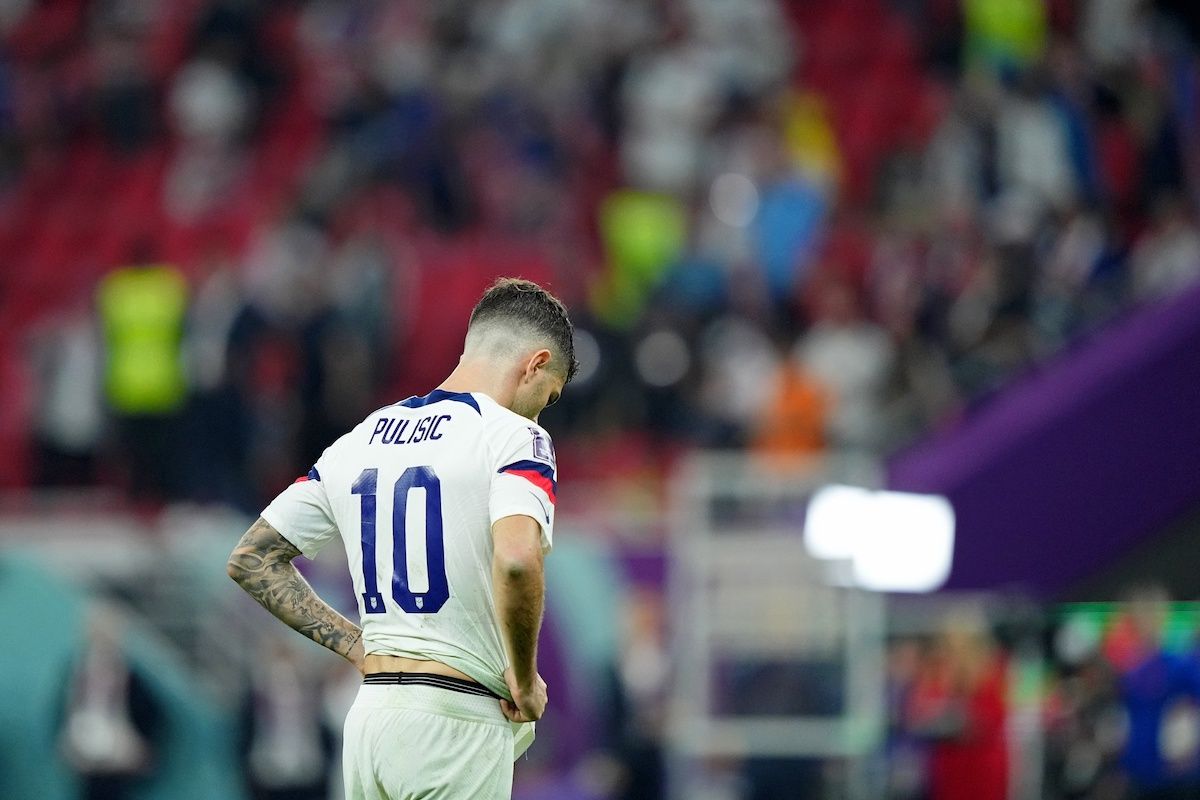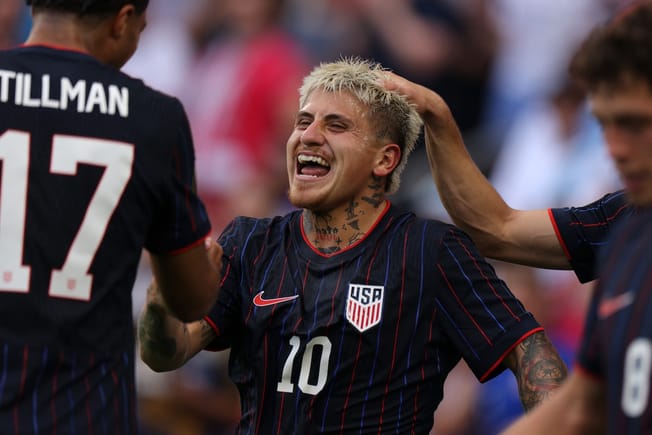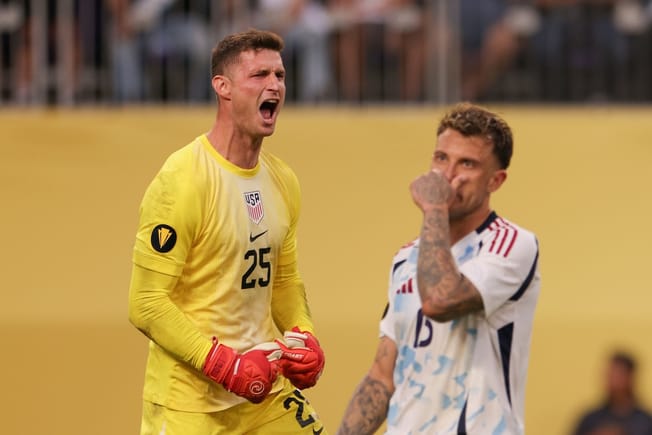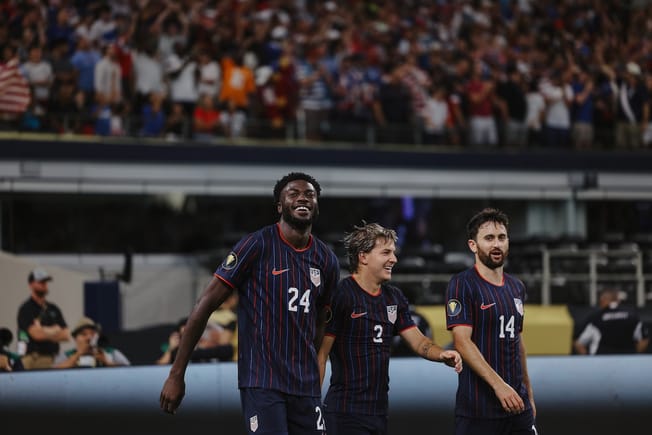Quick Hits
- The United States’ 1-1 draw against Wales on Monday felt more like a loss than it did an actual draw
- Today, we’re analyzing the different factors that led to the U.S.’s draw in their first game at the World Cup
In soccer, there are draws that feel like wins…and then there are draws that feel like losses.
The United States’ game against Wales on Monday was a draw that felt like a loss. Gregg Berhalter’s team outperformed Wales in the first half, playing some of the best soccer we’ve seen from this team recently before losing cohesion, energy, and quality in the second half.
Here are the tactics — and other key factors — behind the USMNT’s loss, er, I mean, draw in their World Cup opener.
ALMOST PERFECT FIRST HALF
I said it up above, but the United States really did have a strong first half. They weren’t dominant, but they controlled possession, created a handful of chances, and virtually eliminated all of Wales’ counter-attacking firepower.
Oh, and they scored a goal. A really, really good goal.
From the start of the game, it was clear Berhalter’s tactical approach hinged on the U.S.’s right-sided players. Timothy Weah and Sergiño Dest both had key roles for their team in possession. When the United States had the ball, Dest stayed deeper on the right side, playing almost as a third center back in possession. With Dest deeper, Weah had the entire right wing to himself to unbalance Wales and threaten their backline. In this image, you can see Weah is the highest and widest U.S. player on the right side.
W I D E O V E R L O A D S PIC.TWITTER.COM/VAYR9NK7A9
— JOHN MULLER (@JOHNSPACEMULLER) NOVEMBER 21, 2022
While Wales tend to be a compact team, they didn’t drop all the way back into their own box. There was still space to exploit, which opened the door for Weah, one of the United States’ most underrated playmakers. Look at Weah (bottom), motion to Dest that he wants the ball played to him behind Wales’ backline in this image from the 9th minute.

Weah’s direct running made the difference for the U.S. in the first half. The USMNT’s goal came from a lovely sequence of play, involving a well-weighted Christian Pulisic pass and, you guessed it, a well-timed Weah run.
TIM. WEAH. 🇺🇸
— FOX Soccer (@FOXSoccer) November 21, 2022
A beautiful goal for the @USMNT 👏 pic.twitter.com/O0B1m8iDGq
With smart movement and defensive intensity, the U.S. kept Wales at bay in the first half.
TOO PASSIVE
But alas, all good things must come to an end. Or, at least history tells us that all good things related to the United States men’s national team must come to an end.
After Weah’s goal, the U.S. lost much of the intensity that made them a force earlier in the game. Their defensive pressure faded as Weston McKennie and Yunus Musah’s energy appeared to drain in midfield. The U.S. lost their field control, too, by shifting to a lower defensive block and letting Wales grow into the game. Most of the time, the idea of giving possession to Wales isn’t an offensive one given their lack of comfort with the ball. But after the way the USMNT started the match? Allowing Page’s team to grow into the game felt like an unnecessary detour in the United States’ potential path to victory.

The USMNT’s direct running gave way to — how do I put this delicately — abhorrent decisions in transition. Okay, maybe I didn’t put it all that delicately, but come on, this is the kind of stuff I’m talking about here.
Am on my second rewatch and the second-half decision making is killing me.
— Matthew Doyle (@MattDoyle76) November 22, 2022
This pass… did not get hit. pic.twitter.com/4H9IJTLCOg
Now, Wales do deserve credit for an improved second half. Page’s decision to bring Kieffer Moore on at halftime changed the game for his team. Moore, who is 6’5”, showed an impressive ability to bring players into the game.
Wales made smart decisions, but for every smart choice that they made, the U.S. made a poor choice of their own. After several stretches of deep defending and a set of failed transition attacks, Walker Zimmerman’s foul in the box led to Gareth Bale’s equalizing penalty kick in the 82nd minute. It was a mistake, no doubt about it. But Zimmerman’s rash challenge was just the latest in a series of errors that turned three points into one for the United States.
Like I said, all good things must come to an end.
BAD SET PIECES
You know one thing that U.S. fans would quite like to come to an end? Christian Pulisic’s set pieces.
Pulisic took six set pieces on Monday (five corner kicks and one free kick). Here’s a quick breakdown of all six of those set piece deliveries:
- 3rd minute: Free kick doesn’t clear the first Welsh defender
- 5th minute: Corner kick cleared away by a defender on the near side of the box
- 34th minute: Corner kick just above Zimmerman’s head, cleared away
- 46th minute: Corner kick cleared away by a defender on the near side of the box
- 70th minute: Corner kick cleared away by a defender on the near side of the box
- 77th minute: Corner kick finds Brenden Aaronson at the back post
Not exactly a sterling group of set pieces. Pulisic struggled with his deliveries into the box against Wales, in both open play and in dead ball moments. He went just 1-for-13 on crosses, which leaves more than a little room for improvement during the rest of the group stage.
This isn’t the first time Pulisic has struggled with his delivery for the USMNT; he’s been inconsistent on dead balls for the U.S. throughout his career. In an international tournament where set pieces tend to play an extremely large role on box scores, having Pulisic take the set pieces was a major mistake. The U.S. left far too many attacking chances on the table against Wales.
Against England, turning over the set piece responsibilities to Weah (who can hit a mean bending ball with his right foot), Aaronson, Kellyn Acosta, or one of the fullbacks would be a wise decision. To maximize their chances of getting out of Group B, the U.S. simply cannot afford to leave attacking opportunities on the table like they did against Wales.
On to England.







Comments